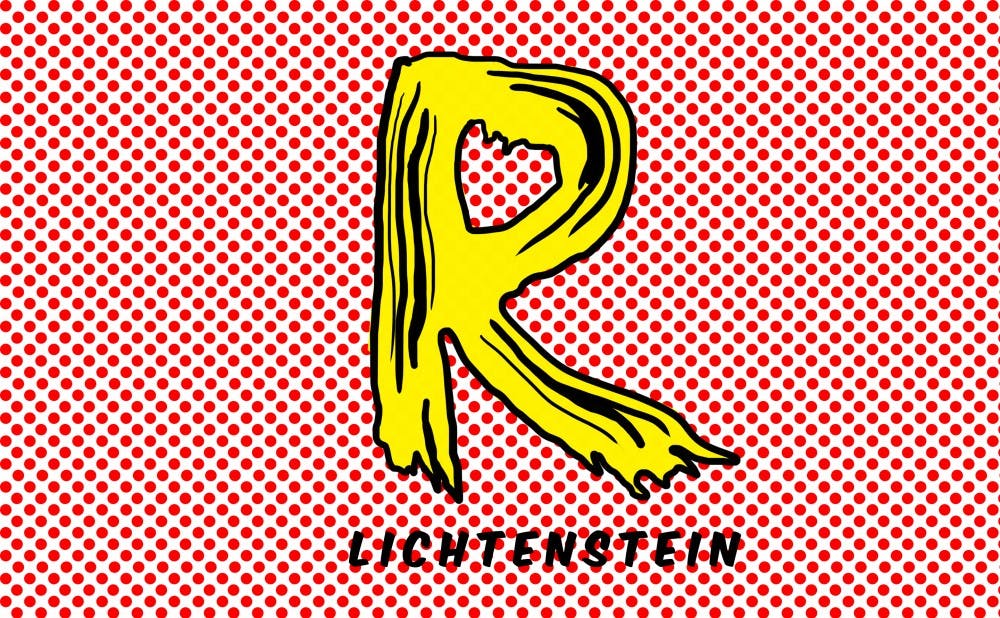I used to hate modern art. This is an especially embarrassing fact for an art history major to admit. As a high school student in my first art history course ever, I was a sucker for talent in realism. The genius of Rembrandt is blatantly obvious through the emotion he painted into his self-portraits, and it is hard to conceive of David sculpted by any other hand than Michelangelo's. I fangirled over Dürer and Vermeer to no end, and thought my friends were silly for liking anything remotely modern. If an artist's skill wasn't immediately apparent to the viewer, did they really have skill at all?
My one exception to this general disdain for modern art was an obvious choice: Roy Lichtenstein. Lichtenstein was the first artist I ever really, really liked.
He was certainly the first artist I appreciated that has been alive during my lifetime; he passed away in 1997, the year I was born. Probably the most influential figure in the development of my love of art, my grandmother explained to me in grade school how he used Ben Day dots, like those in comic books, to create pieces of fine art. I was captivated. His paintings were flashy, bold and easily accessible. Even then, I wondered if such familiar imagery could really be labeled as "art," and was drawn to the notion of art as something ultimately pulled from everyday life. As a child, it was the first art I felt I could understand.
Understanding Lichtenstein eventually helped me appreciate other more modern artists. Although I was never really a fan of van Gogh, I was somehow drawn to Lichtenstein's take on his famous "Bedroom in Arles." Lichtenstein's 1992 "Bedroom at Arles" presents a more colorful and modern room than did van Gogh's work a hundred years prior, but maintains its easily recognizable composition. If I was allured to Lichtenstein's much simpler painting, should I not appreciate van Gogh's? When I visited the van Gogh museum in Amsterdam the summer before college, "Bedroom in Arles" was the one work I was determined to see and, surrounded by hundreds of other amazing pieces at the Musée d'Orsay last summer, the version of the painting there was the highlight of my visit. Lichtenstein's garish, humorous interpretation of the masterpiece made me appreciate the original all the more. His "Portrait of Madame Cézanne" and "Woman with Flowered Hat" had a similar effect, making me question the oeuvres of Cézanne and Picasso.
Outside of his spoofs of other famous artists, I appreciate Lichtenstein most for his comic strip paintings. In true pop art fashion, he elevates the common imagery of comic books — gaudy colors, thought bubbles and all — to the fine art of oil paintings on canvas. This process is ironic at its core. Lichtenstein depicts two of the most central themes of human existence, love and war, as obnoxiously bright scenes from overly dramatic stories. In doing so, he questions the seriousness of traditional gender roles. His "Takka Takka," "Okay Hot-Shot, Okay!" and, perhaps his most famous work, "Whaam!," along with the rest of his military art, comment on the romanticization and trivialization of violence in popular media. Drafted to serve in Europe during World War II, Lichtenstein was personally aware of the lingo and war sounds sensationalized in comic books.
I have used one of Lichtenstein's paintings of comics-inspired women as my computer screensaver for most of my recent memory. "Oh, Jeff... I Love You, Too... But..." was the backdrop for drafting my college application essays, "In the Car" was the background for my first three years at Duke and "Drowning Girl" is currently what I see as I work on my thesis and after-graduation internship applications. I connect to these paintings because they are both hyper-real and unreal at the same time. With just basic outlines and fields of color, Lichtenstein is able to imbue true emotion into the women's faces. Their sadness and resignation are powerfully tangible. At the same time, they are stylized images of women in a painting, which is a stylized version of a comic strip scene; they are doubly removed from real life. In this artificiality and brightness of color, their pain is satirical. In opening up my laptop after a long day of classes, with hours and hours of homework ahead of me, Lichtenstein always reminds me that things probably aren't all that bad after all.
This past summer, a friend gave me a keychain that says "MODERN ART = I COULD DO THAT + YEAH, BUT YOU DIDN'T," that I carry around every day. I know I used to view modern art through the "I could do that" lens, focusing on detail and realism, over the "yeah, but you didn't" have the creativity originality to create an innovative modern art piece. I've come to understand the social and intellectual power of modern and contemporary art as a transmitter of ideas and emotions, as well as of aesthetics. Without Lichtenstein, I may never have given modern art a second chance.
Get The Chronicle straight to your inbox
Signup for our weekly newsletter. Cancel at any time.

